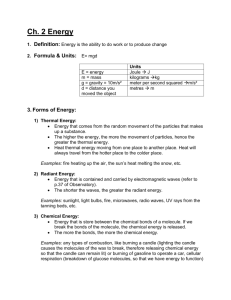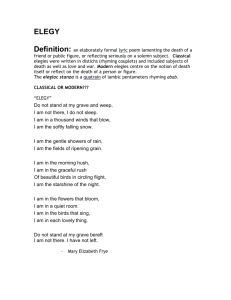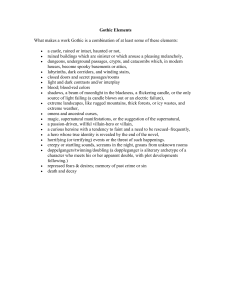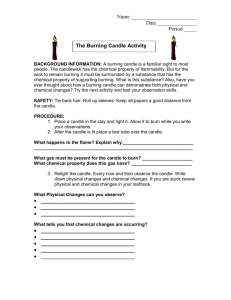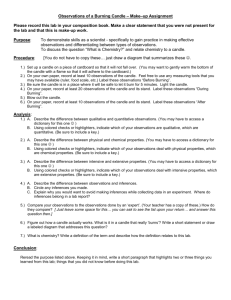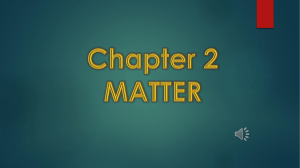Candles Task
advertisement
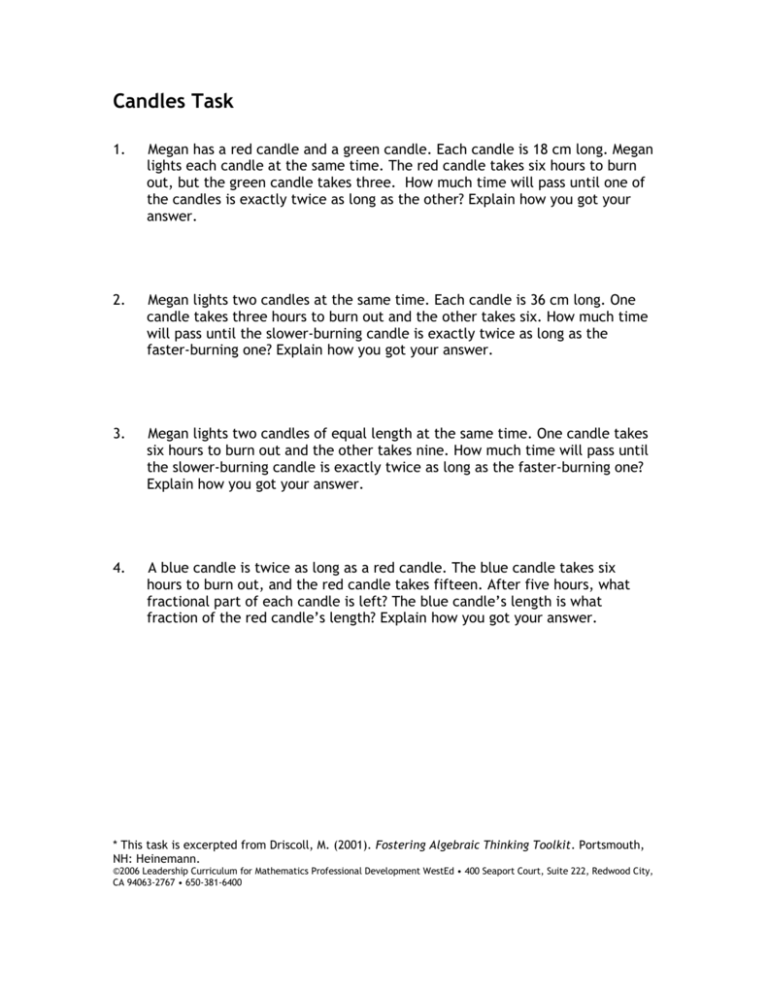
Candles Task 1. Megan has a red candle and a green candle. Each candle is 18 cm long. Megan lights each candle at the same time. The red candle takes six hours to burn out, but the green candle takes three. How much time will pass until one of the candles is exactly twice as long as the other? Explain how you got your answer. 2. Megan lights two candles at the same time. Each candle is 36 cm long. One candle takes three hours to burn out and the other takes six. How much time will pass until the slower-burning candle is exactly twice as long as the faster-burning one? Explain how you got your answer. 3. Megan lights two candles of equal length at the same time. One candle takes six hours to burn out and the other takes nine. How much time will pass until the slower-burning candle is exactly twice as long as the faster-burning one? Explain how you got your answer. 4. A blue candle is twice as long as a red candle. The blue candle takes six hours to burn out, and the red candle takes fifteen. After five hours, what fractional part of each candle is left? The blue candle’s length is what fraction of the red candle’s length? Explain how you got your answer. * This task is excerpted from Driscoll, M. (2001). Fostering Algebraic Thinking Toolkit. Portsmouth, NH: Heinemann. ©2006 Leadership Curriculum for Mathematics Professional Development WestEd • 400 Seaport Court, Suite 222, Redwood City, CA 94063-2767 • 650-381-6400 Sneaking Up in Line It's a hot summer day, and Eric the Sheep is at the end of a line of sheep waiting to be shorn. There are 50 sheep in front of him. Being an impatient sort of sheep, though, every time the shearer takes a sheep from the front of the line to be shorn, Eric jumps in front of the next two sheep in front of him. If he continues to do this how many sheep will be shorn before Eric? The Locker Problem There are 20 closed lockers in one hallway of your school. Your class decides to conduct an experiment. The first student is going to run down the row and open each of the locker doors. The second student in line will start with locker #2 and close every second door. The third student will start at locker #3 and change the state of every third locker. The fourth student will start at locker #4 and change the state of every fourth locker, and so on, until 20 students have passed by the lockers. Which lockers are still open after the twentieth student is finished? Which locker or lockers changed the most? Suppose there are 200 lockers. Which lockers are open after the 200th student is finished? Which locker or lockers changed the most?



